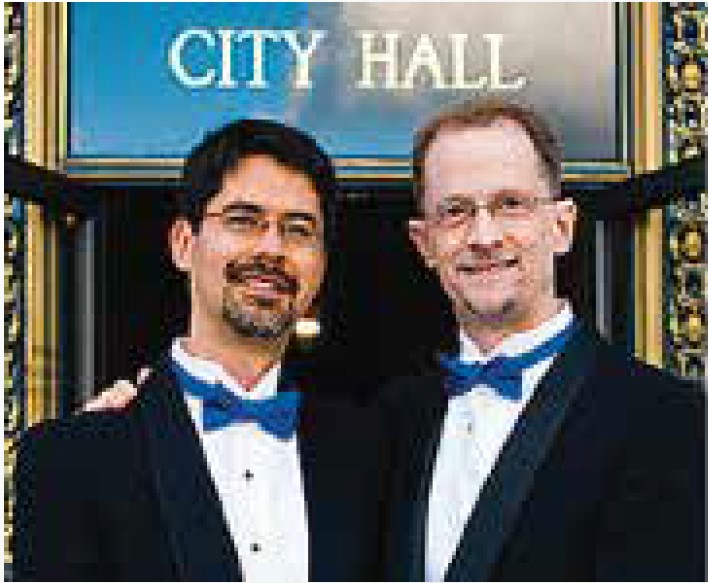
By John Lewis and Stuart Gaffney–
Justice Sonia Sotomayor wrote a powerful dissenting opinion to last month’s disturbing U.S. Supreme Court decision, issued by the extremely conservative Republican-appointed Court’s supermajority, which permitted a politically conservative Christian custom web designer to openly discriminate against loving, committed same-sex couples. It is very important to note, as the leading LGBTIQ legal organizations such as GLAAD have explained, that the case before the Court pertained to a web designer who asserted that she created “unique” commissioned “original artwork, designs and text” for specific clients. Thus, “the unusual nature of the transaction in the case suggests the ruling has virtually no application to the overwhelming majority of businesses providing goods and services to the public.”

But Sotomayor, as well as the leading LGBTIQ legal organizations, are deeply concerned about the implications of the ruling for queer people and other minority groups and about how the Court could rule in future public accommodations cases that the far-right Christian political movement may bring. Sotomayor’s incisive opinion, joined by her fellow Democratic-appointed women colleagues, Justices Kagan and Jackson, shredded the legal reasoning of the all Republican-appointed majority decision.
But most striking about Sotomayor’s opinion was the enormous empathy and deep care for LGBTIQ people that she expressed in the opinion—two treasured traits rarely found in legal opinions. For example, Sotomayor recounted the recent horrific experience of a gay widower when a funeral home refused to receive or cremate the body of his deceased husband, much less host a memorial luncheon for the family—simply because he was gay. Sotomayor recounted:
“Robert ‘Bob’ Huskey and John ‘Jack’ Zawadski … were a loving couple of 52 years. They moved from California to Colorado to care for Bob’s mother, then to Wisconsin to farm apples and teach special education, and then to Mississippi to retire.
Within weeks of [the 2015 Supreme Court decision establishing nationwide marriage equality], Bob and Jack got married. They were 85 and 81 years old on their wedding day.
A few months later, Bob’s health took a turn. He died the following spring. When Bob’s family was forced to find an alternative funeral home more than an hour from where Bob and Jack lived (because Bob was gay), the lunch in Bob’s memory had to be canceled. Jack died the next year.”
“This ostracism, this otherness, is among the most distressing feelings that can be felt by our social species,” explained Sotomayor, citing expert psychological findings. After later recounting another personal story of another LGBTIQ couple, she noted, “[t]here are many such stories, too many to tell here,” and warned that “after today, too many to come.”
Sotomayor further related in a strikingly personal manner the everyday experience of far too many queer people today: “Ask any LGBT person, and you will learn just how often they are forced to navigate life” and self-monitor their behavior between “public places where they can be themselves” and others “where they cannot.” Sotomayor had clearly listened to and taken in the personal stories and experiences of real LGBTIQ people. She explained that many queer people “must ask themselves: If I reveal my identity to this co-worker, or to this shopkeeper, will they treat me the same way? If I hold the hand of my partner in this setting, will someone stare at me, harass me, or even hurt me?” And she laid bare that having to do so “is an awful way to live,” declaring that “[f]reedom from this way of life is the very object” of public accommodation laws.
Sotomayor in her opinion affirmed the proud presence of queer people and the dignity and worthiness of our struggle for equality in a way never before expressed in a U.S. Supreme Court opinion. She proclaimed: “LGBT people have existed for all of human history. And as sure as they have existed, others have sought to deny their existence, and to exclude them from public life.” She recounted “the brutal murder of Matthew Shepard,” the horror of “the Pulse nightclub massacre,” and the high rates of violence overall against “LGBT people, with transgender persons particularly vulnerable to attack.”
Sotomayor’s decision also referred to the “slew of anti-LGBT laws [that] have been passed in some parts of the country” in the last couple of years. She declared that the Court’s “decision itself inflicts a kind of stigmatic harm” on queer people, thereby accusing her Republican-appointed colleagues themselves of complicity in the anti-LGBTIQ backlash being carried out in numerous Republican-controlled governmental institutions across the country.
In conclusion, Sotomayor denounced the moral vacuity of the “[w]hat’s mine is mine, and what’s yours is yours” approach to life that underlies the Court’s decision. She reminded us that nothing forces us to treat each other this way, and that even faced with the current Supreme Court supermajority’s inordinate power we are not “powerless in the face of the decision.” She appealed: “The meaning of our Constitution is found not in any law volume, but in the spirit of the people who live under it. Every business owner in America has a choice whether to live out the values in the Constitution. Make no mistake: Invidious discrimination is not one of them.”
John Lewis and Stuart Gaffney, together for over three decades, were plaintiffs in the California case for equal marriage rights decided by the California Supreme Court in 2008. Their leadership in the grassroots organization Marriage Equality USA contributed in 2015 to making same-sex marriage legal nationwide.
6/26 and Beyond
Published on July 13, 2023
Recent Comments